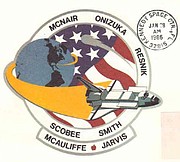Greenspring resident Tak Kato spent his career as an electrical engineer working in the research, design, and development of operational systems and satellite technology for international space programs.
In 1972, Kato joined the National Space Development Agency of Japan (NASDA) in Tokyo as acting manager over the design, development, and integration of the tracking and control software system for the first Japanese geostationary satellite. A few years later, he served as the manager for the second generation system. In the early 1980s, Kato worked as senior engineer of NASDA's System Planning Department and developed a strategy to strengthen domestic geostationary satellite technology in Japan.
In 1985, the Japanese government sent Kato to Houston, Texas to assist with the development of the Space Station Freedom program. The program, with the support of Canada, Japan, the United States, and countries of the European Space Agency, was a NASA project intended to build and launch a permanently manned Earth-orbiting space station. Eventually, the project morphed into the International Space Station program.
On Jan. 28, 1986—the day of the space shuttle Challenger disaster—Kato was meeting with colleagues at Johnson Space Center in Houston. At the time, Kato was the Japanese Lead Liaison, as well as director of the Houston Liaison Office, for the Space Station Freedom program. The group watched live on television as the Challenger was launched from Cape Canaveral.
“After the explosion, I remember some of the NASA engineers getting up one-by-one and leaving,” said Kato.
While a shock to all who witnessed it live or learned of it later, the Challenger disaster was even more personal to Kato. While working in Houston in 1985, he was asked if he’d like to have the assistance of a secretary who was fluent in Japanese. He hired Lorna Onizuka, who was the wife of NASA astronaut Ellison Onizuka. Onizuka was one of the seven crew members who perished that day in the Challenger explosion. Following the disaster, Kato was part of the coordination team for the delegation of the Japanese government to the U.S. for the Challenger crew’s memorial service at Johnson Space Center, where President Reagan gave a speech. After a few months, Lorna came back to work, Kato recalls.
Following the Challenger explosion, Kato moved to the D.C. area where NASA centralized the program office, close to NASA Headquarters. He served as director of the Reston Liaison Office for the Space Station Freedom program until 1993, when he moved back to Japan to serve as the project manager for developing an International Space Station cargo ship. In 1998, he went back to Houston to serve as vice president for the next eight years of JAMSS America, a system engineering organization supporting NASDA. In 2010, he retired from JAMSS America and transitioned back to the D.C. area, when he moved to Greenspring retirement community in Springfield.
Kato received a Bachelor of Science degree in engineering from Keio University in Tokyo, and earned a Master of Science degree and a PhD in electrical engineering from the University of Illinois, Urbana. Prior to his work with NASDA, Kato also worked as a graduate research assistant under the Atomic Energy Commission.
